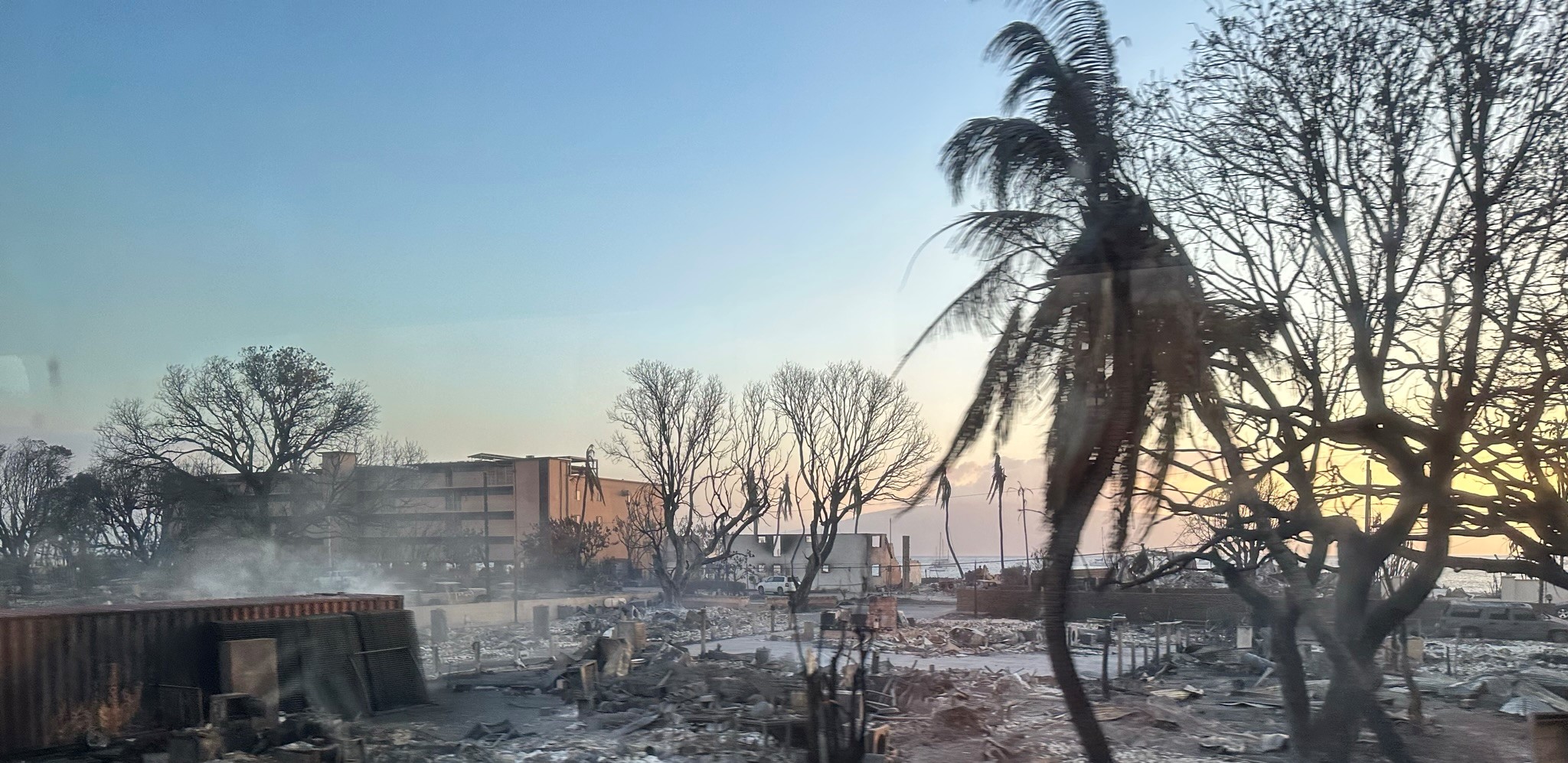

Event Headlines
- Guy Carpenter estimates the Lahaina wildfire will result in insured loss of $4B to $6B USD. The Lahaina wildfire is the second costliest disaster in Hawaii history behind Hurricane Iniki of 1992. With 115 fatalities and over 1,000 people still missing, it is the deadliest wildfire in over a century in the United States.
- There are several factors resulting in higher than average uncertainty regarding the final cost including demand surge in an island environment, business interruption to the tourist area north of Lahaina, the ultimate cost of debris removal and whether it will be partially funded through insurance claims or by federal, state, and local resources.
- A range of human non-climate influences contributed to the disasterous outcome. There are no direct linkages to a changing climate and the ultimate outcome of the fire, although subtle shifts in climate slightly increase the potential for an event of this magnitude to transpire.
- With the fire ignition occurring upslope of Lahaina and rapid spread due to strong winds, the wildfire quickly turned into an urban conflagration with structure to structure spread via ember transport.
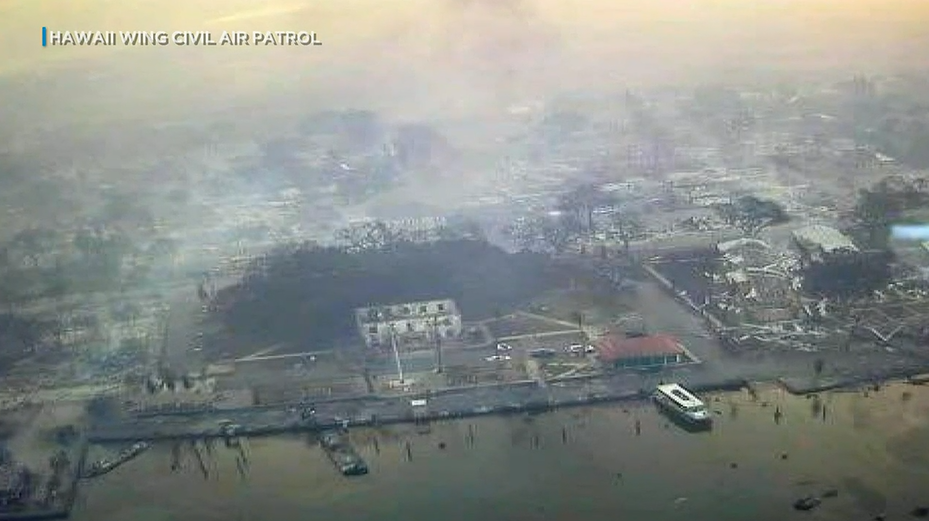
Insured Loss Estimates
A range of insurance loss estimates have been provided for the Lahaina fire in the chart below. The wide range of estimates is due to uncertainties in demand surge and business interruption in an island economy. Given these factors, Guy Carpenter estimates the insured losses will end on the higher end of the range of industry viewpoints based on an analysis of the largest wildfires in the state of California.
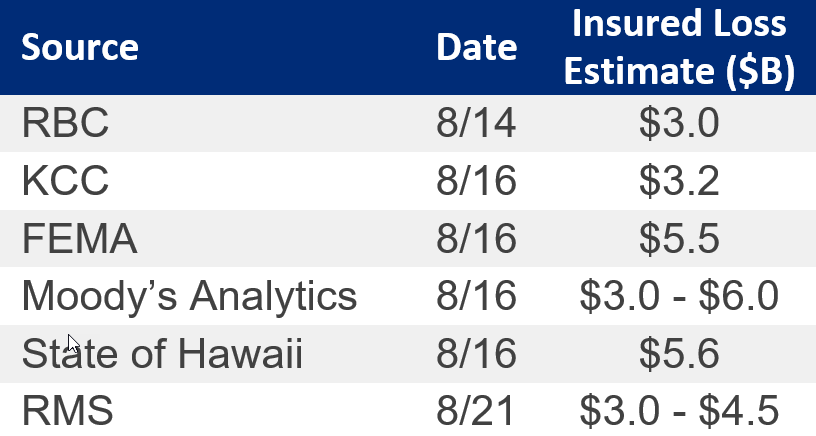

Uncertainties in Insured Loss Estimates
With the unique location in the middle of the Pacific Ocean, there are several factors which increase the uncertainty of ultimate incurred losses for the insurance industry.
- Demand Surge for an Island Economy: After Hurricane Maria in 2017 impacting Puerto Rico, demand surge was believed to increase the overall cost by 20% to 35%. With Hawaii much further from the mainland, it is possible demand surge could be higher.
- Business Interruption: To the north of Lahaina is a large tourism district including the towns of Ka'anapali and Kapalua. A survey of large hotels indicates there is on average a 30 to 90 day reservation cancellation due to housing of homeless citizens and ingress/egress issues.
- Debris Removal Costs: In totality, the average cost of debris removal from the latest California wildfires of the last decade range from $1B to $3B USD. While the cost is largely borne by federal, state and local entities, it can also increase claims severity.
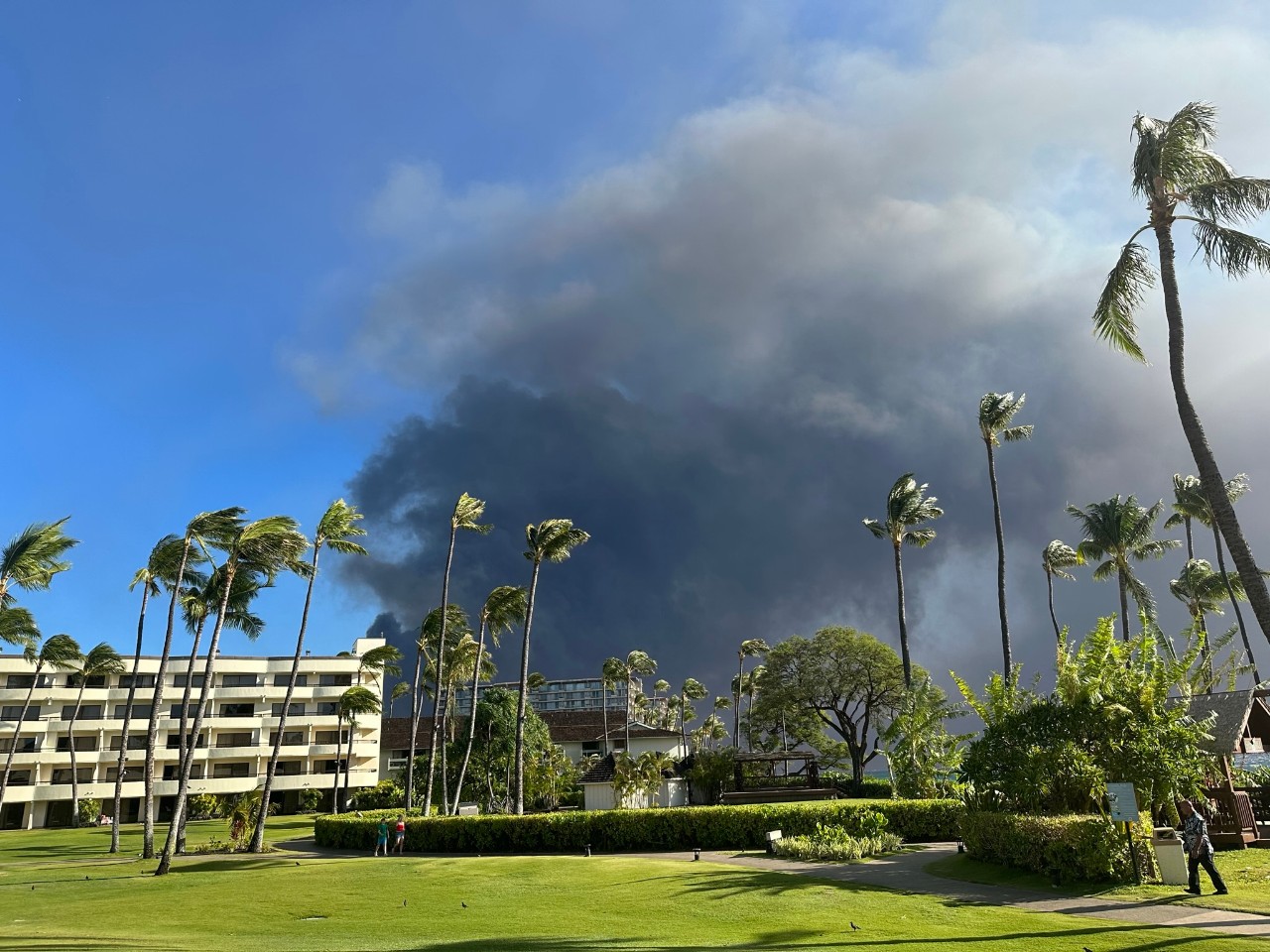
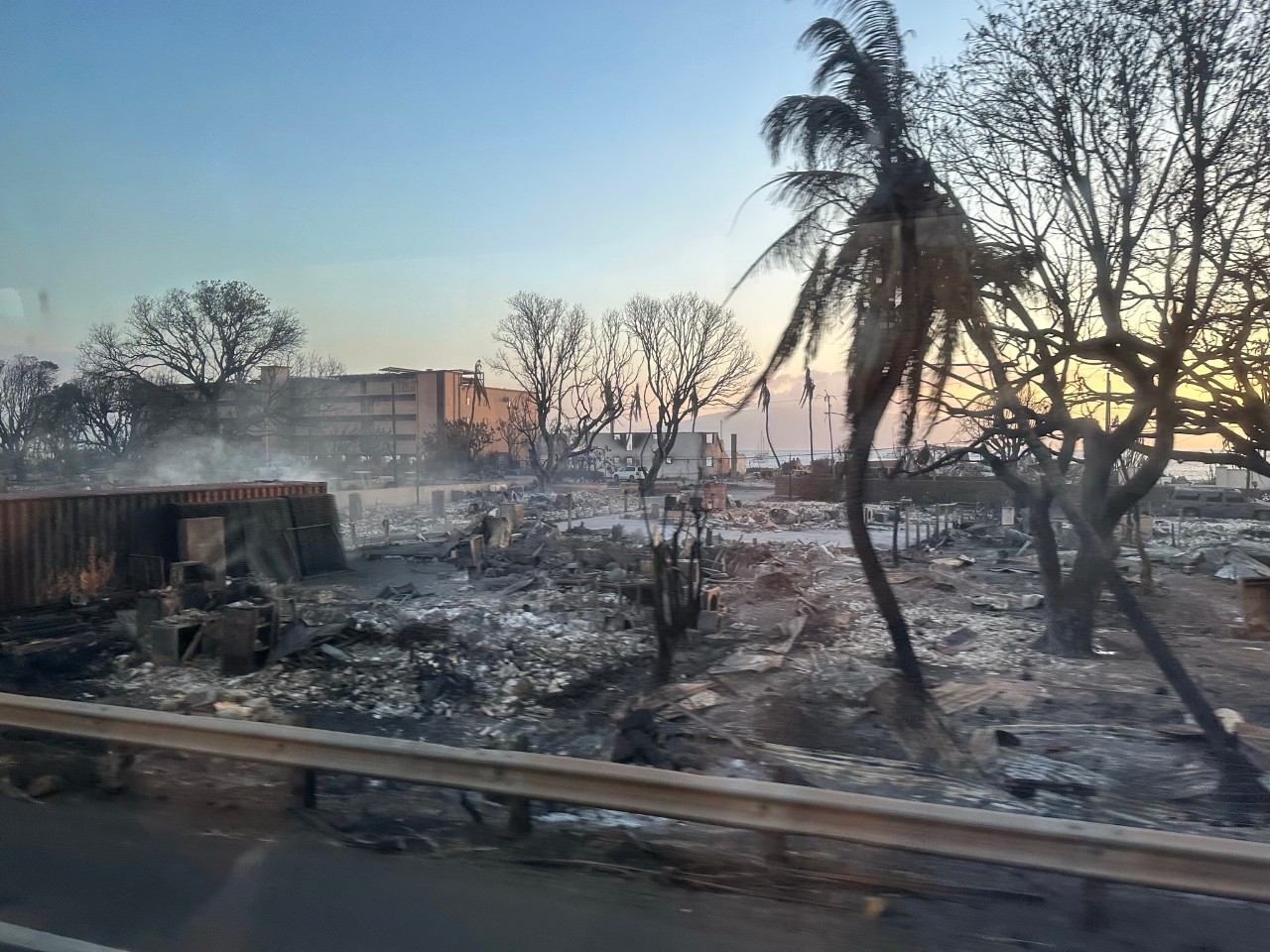
Human Influences Amplifying Catastrophic Outcomes
As with any major natural disaster, particularly those which are not anticipated, multiple factors converge to initiate an event. Human elements outside of man-made climate change were the largest contributors to the event as a whole. There is no clear signal that any single factor in the fire ignition and spread is linked to climate change. Instead, the natural variability of several key elements resulted in the conditions necessary for the fire to occur.
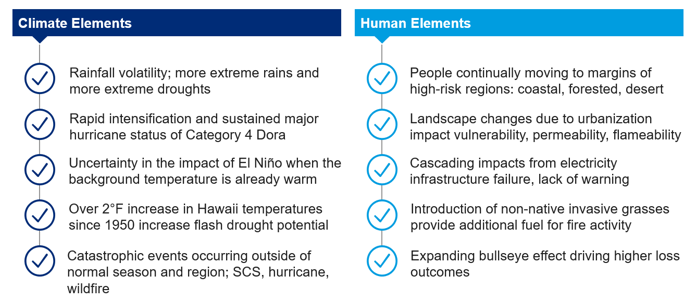
Urban Conflagration with Rapid Population Growth
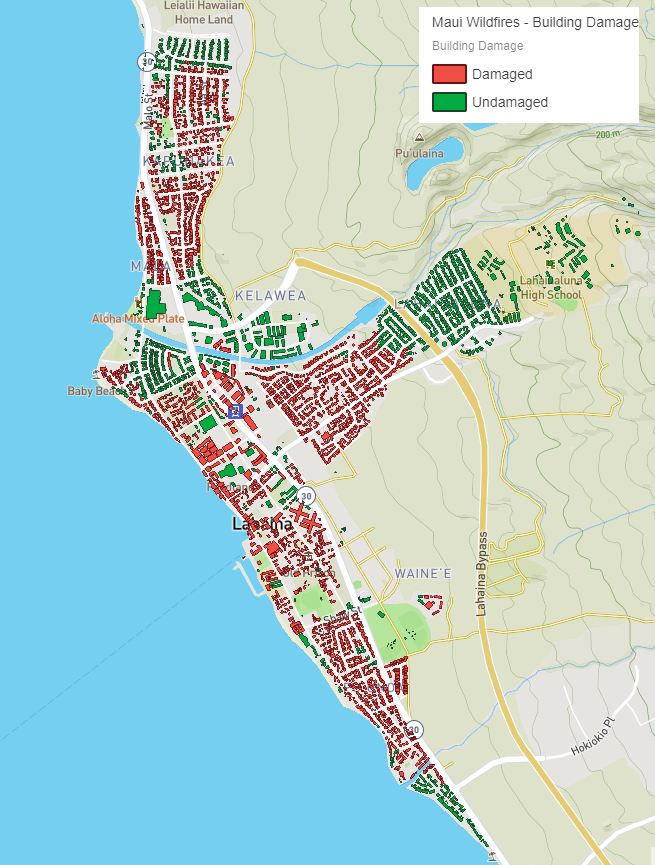
The Lahaina fire initiated downslope of the Lahaina bypass and quickly spread west and downhill to the Pacific Ocean. Due to winds more than 60 mph, the initial wildfire spread rapidly as ground fire and eventually structure to structure spread via ember transmission. Additionally, The population growth of Maui over the last fifty years has significantly outpaced the state of Hawaii. The town of Lahaina experienced 28% growth since 2000, with increasing density of housing and businesses due to limited area of buildable land. The pace of spread overwhelmed fire fighting resources resulting in the deadliest fire in over 100 years for the United States.
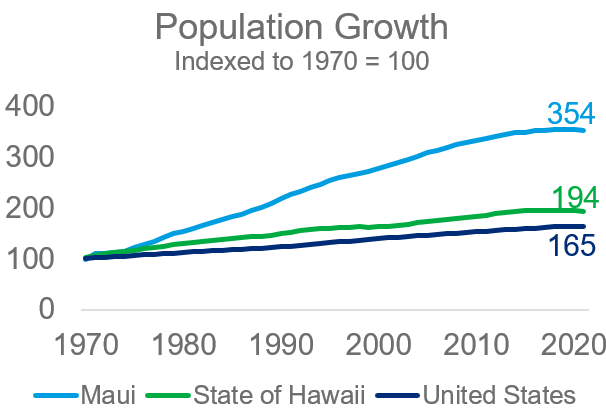
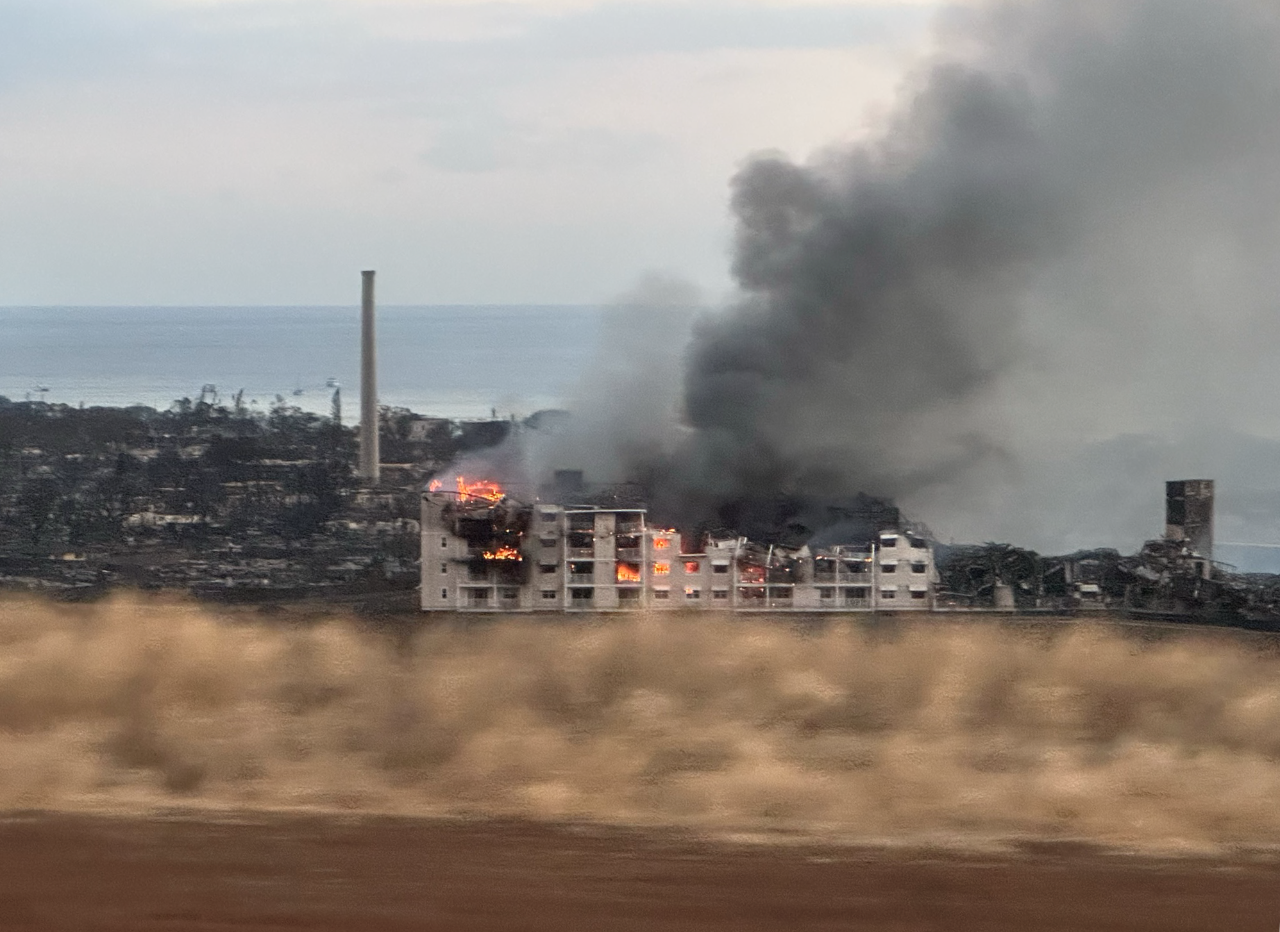
Additional Links